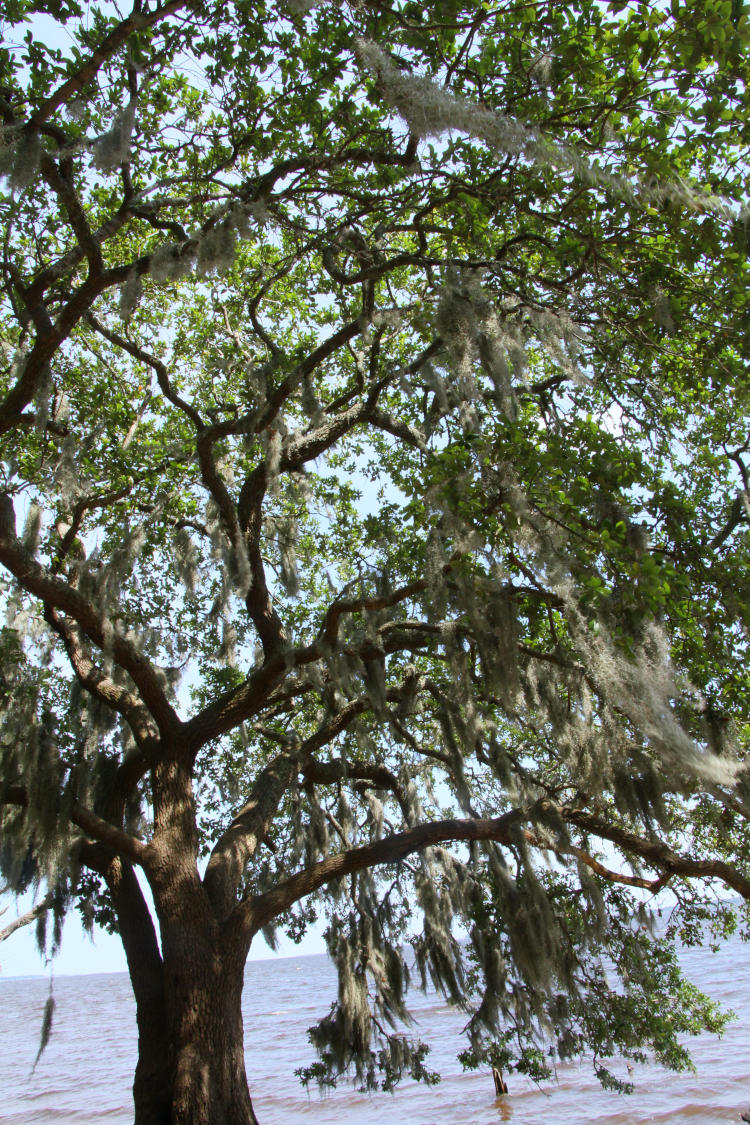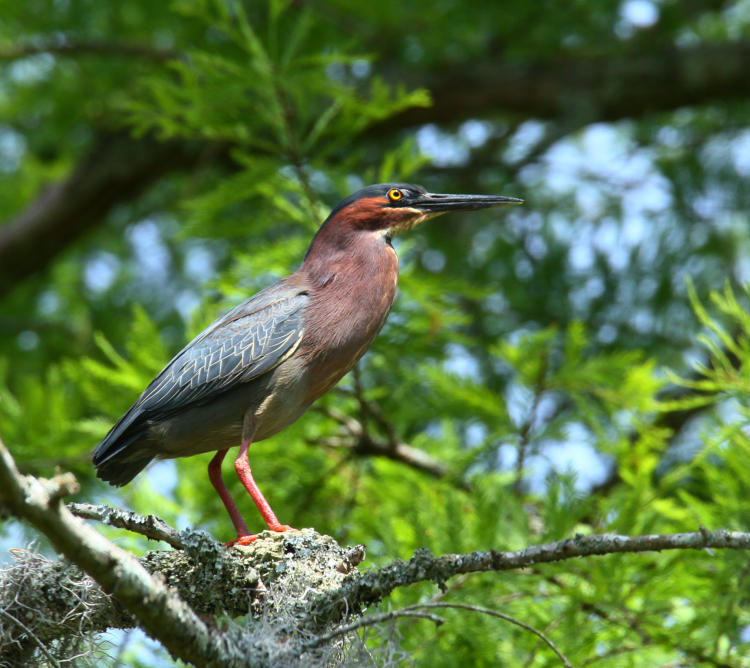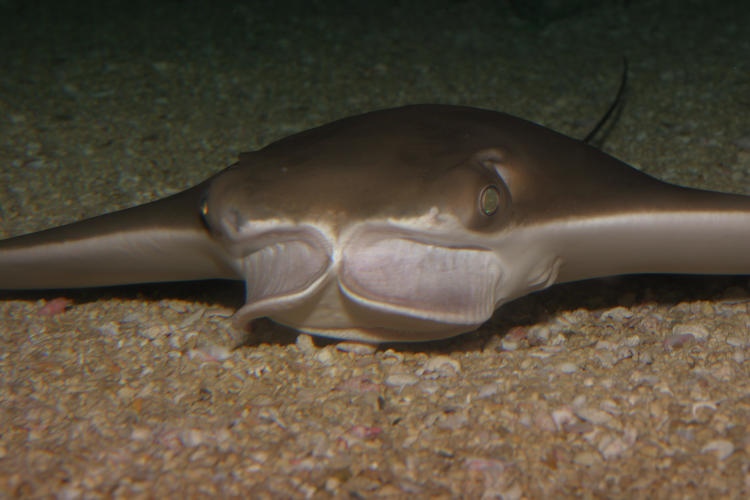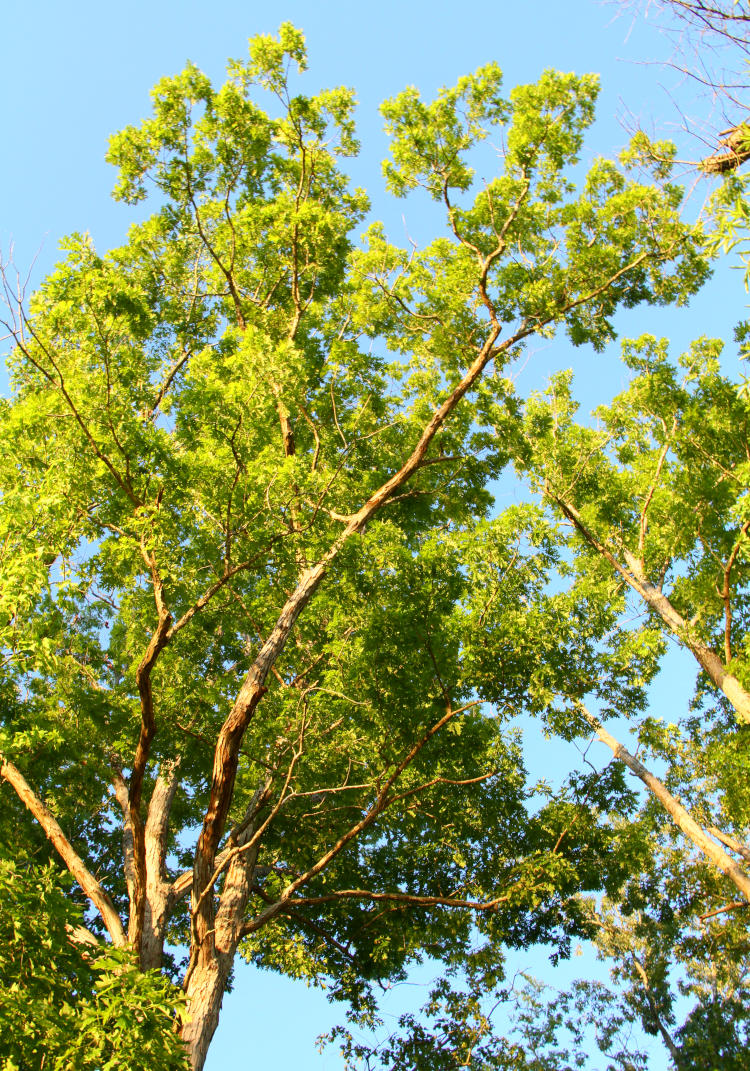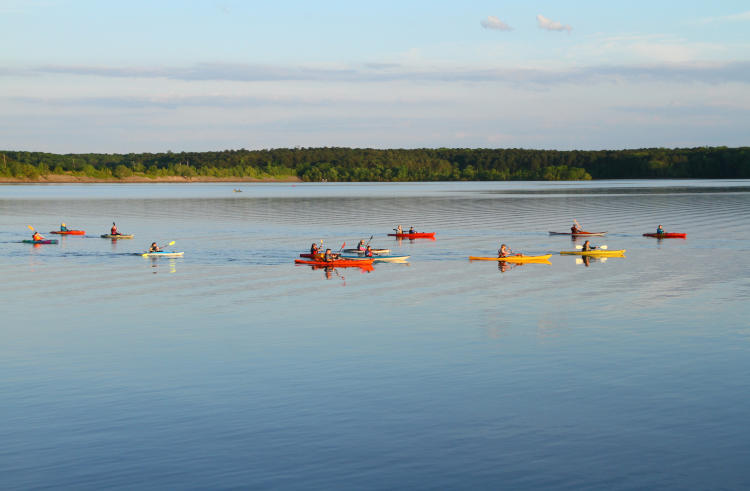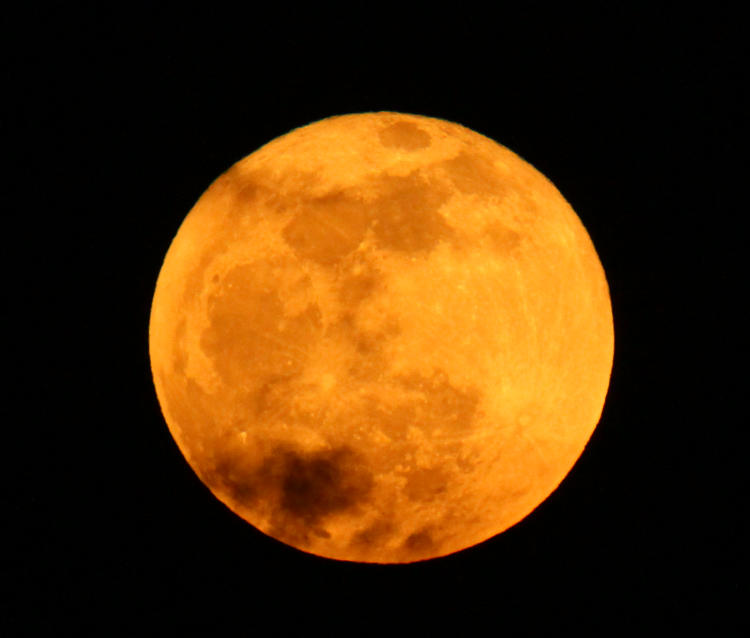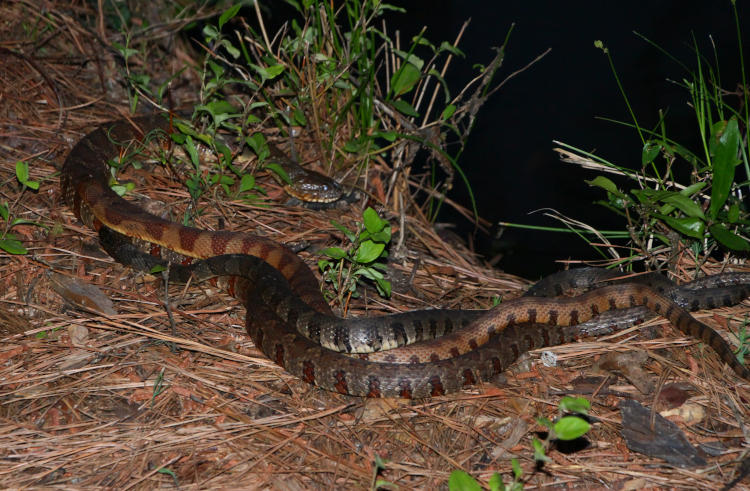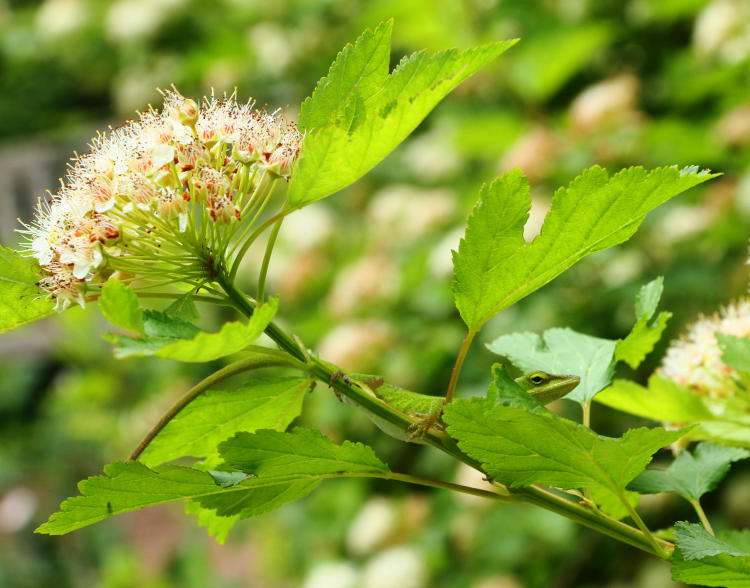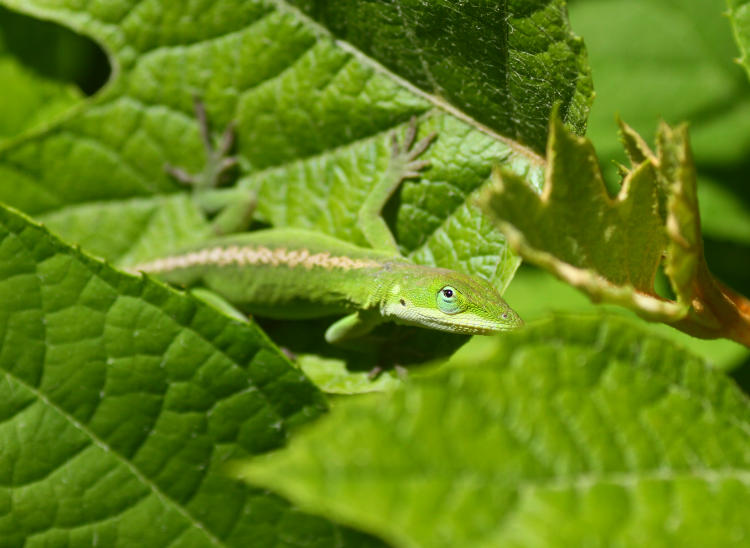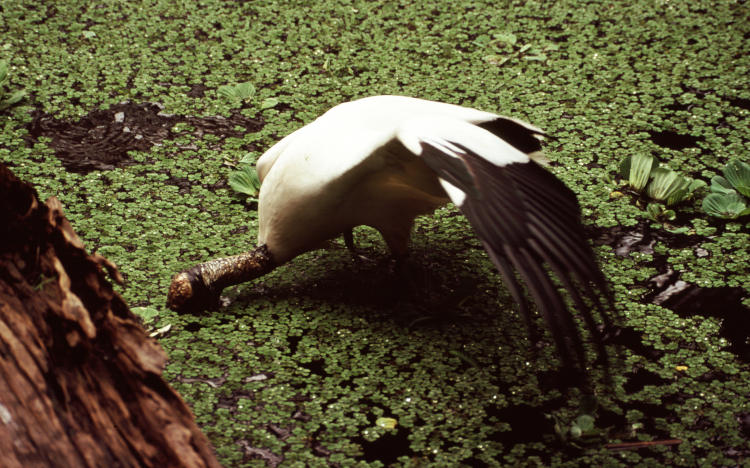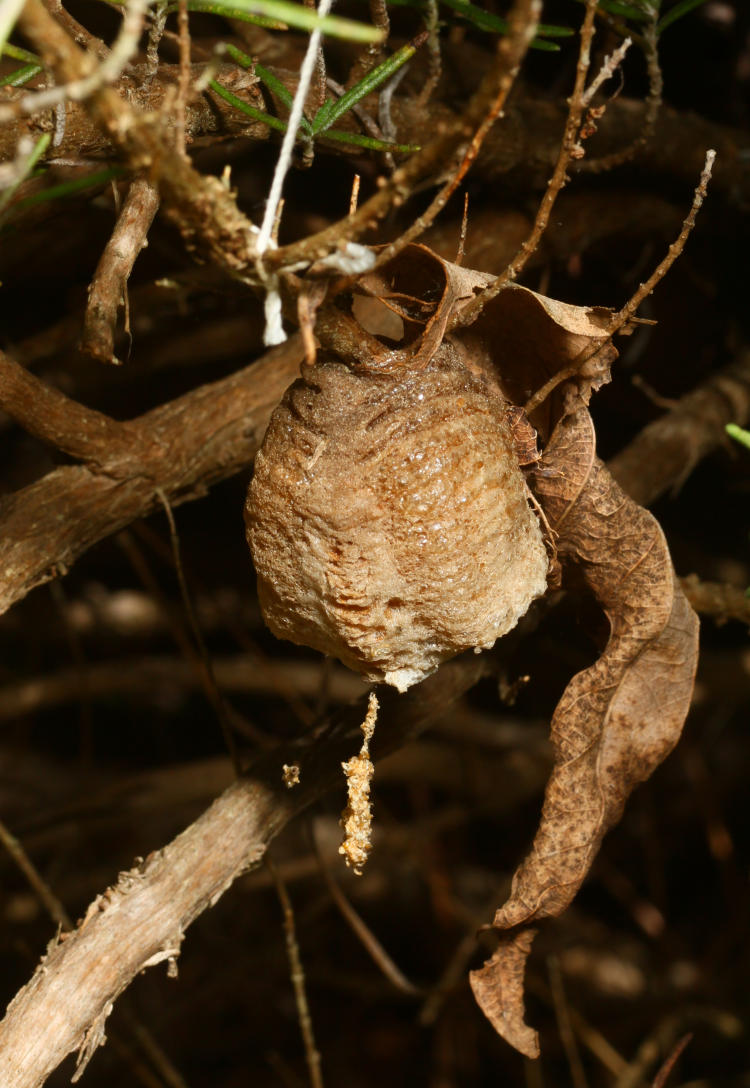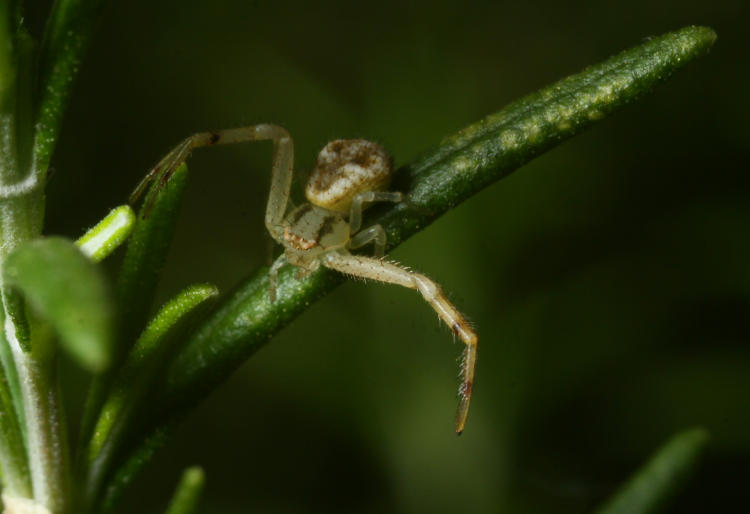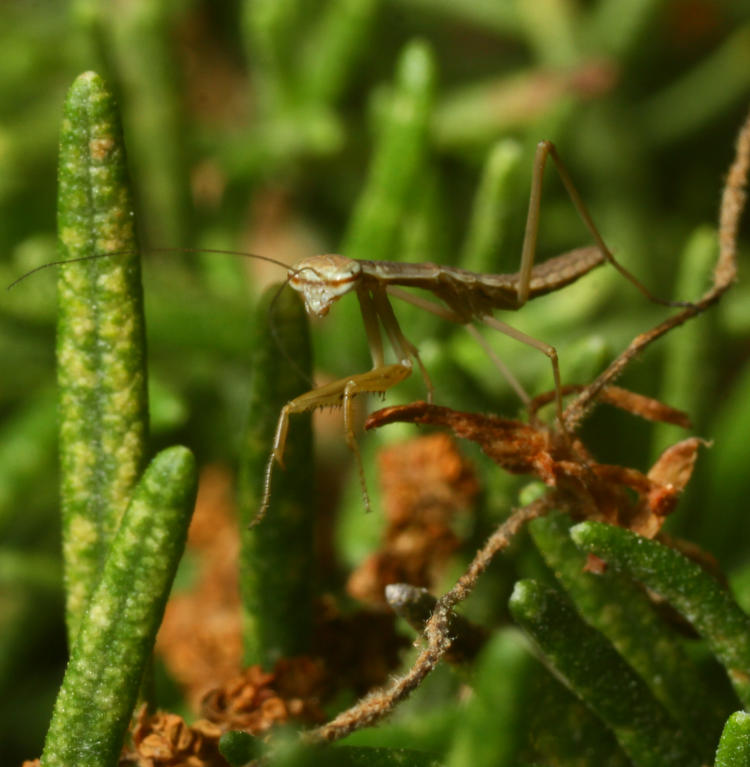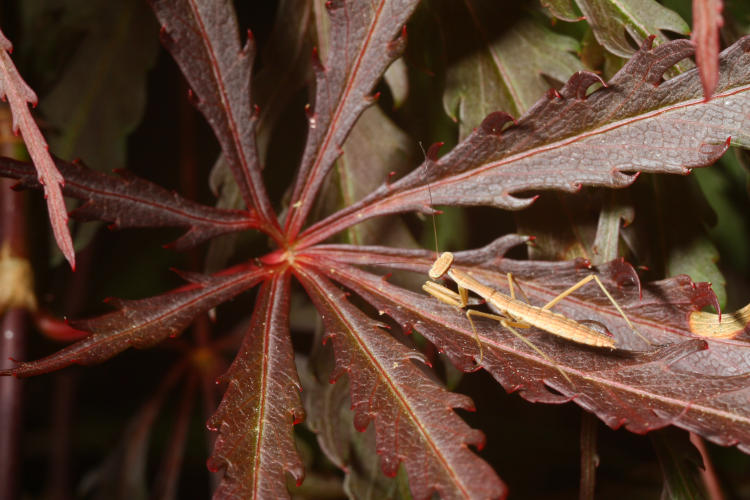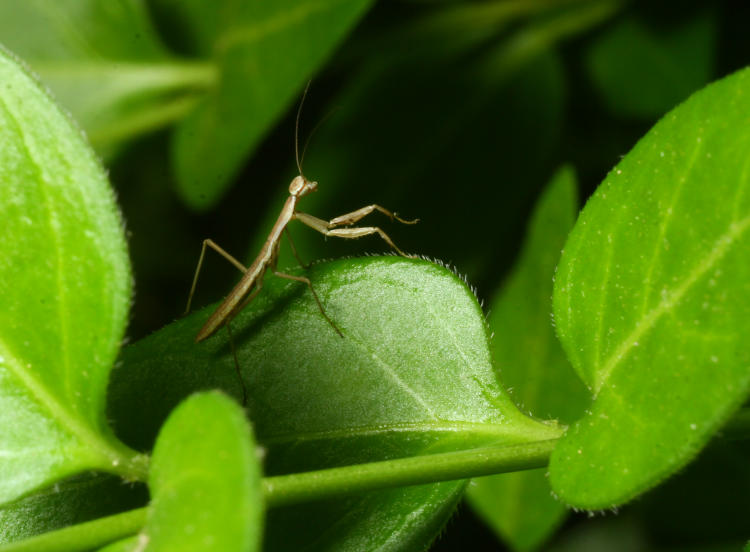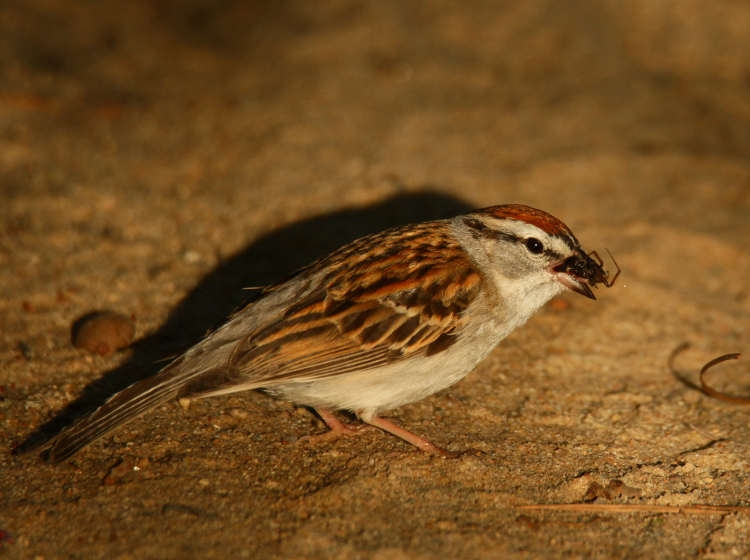On an outing back, once again, to Jordan Lake (we’re in a rut) this past Friday, the bird activity was higher than it’s been all year, so far anyway, but unfortunately a bit distant. I shot a very large number of frames, but probably better than half will be discarded; too much of it was either trying to snag the actions of a distant subject that couldn’t be seen clearly, or focus-wandering and motion blur. The focus issue is much-improved after some maintenance and adjustments, but it still gets fooled or lost from time to time.
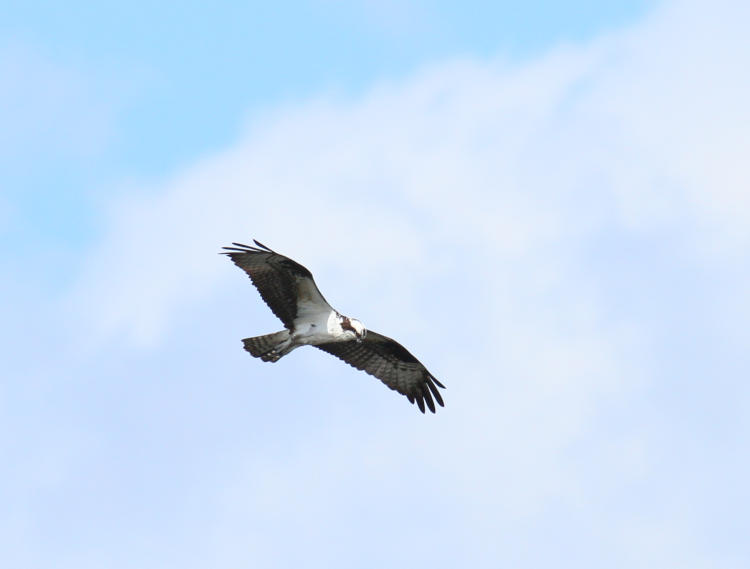
This osprey (Pandion haliaetus) was only circling without making any dives for fish, true for far too many that we saw that day. But I liked the rendering of the clouds in this one at least.
Later on, we were on a narrow land bridge between the lake and a moderately-sized pool when an osprey began its stoop into the pool.

Just a little motion blur from this, but the pose was notably different from normal and looked cool. However, the bird passed behind some trees from me just as it was reaching the water and I couldn’t see the entry or climb out with a fish. We had a great view of the entire lake on the opposite side, but weren’t positioned for a good view of the pool. So it goes.
The osprey nest that we’d been watching was still occupied, though it took long observation to determine this; the foliage was thicker now and the mother, sitting on the eggs, was maintaining a low profile. However, her mate would make appearances at times, like when a bald eagle (Haliaeetus leucocephalus) passed too close to the nest.

This is just to illustrate, because it’s the entire frame, what I was seeing in the viewfinder – the birds were several hundred meters off. I’d been clued in to the altercation by the territorial cries of the osprey, otherwise I might have missed it all. We go in closer:

Just too great a distance for decent resolution, but the poses were cool. Osprey, of course, on the right, eagle on the left, ready to defend itself. The dispute involved several antagonistic passes over better than 20 seconds.

While they look almost comparable in size here, note that the shadow of the osprey is cast onto the eagle, in late afternoon as the sun was getting lower; the osprey is closer to the camera than the eagle. In reality, eagles mass two to three times what osprey do, though wingspan is only about 20% larger.

This is a better comparison, because they’re close to the same distance from the camera. And yes, it’s dead level; the eagle is nearly inverted to fend off the osprey. Osprey are also faster and a lot more agile than eagles, so it could circle and come back around for another pass before the eagle could vacate the area, which it eventually did, and the osprey returned to the nest.
But a short time later, the tides had turned:

I never saw the osprey catch its fish, nor where the eagle came from, but suddenly very close by there was a dogfight as the eagle came in to harass the osprey into dropping its catch. I can’t say that either of these were the same birds seen earlier. This is far from the quality that I ever want to show people, but the action was too cool to pass up, and the desperate appearance of the osprey wings and tail were very evocative.
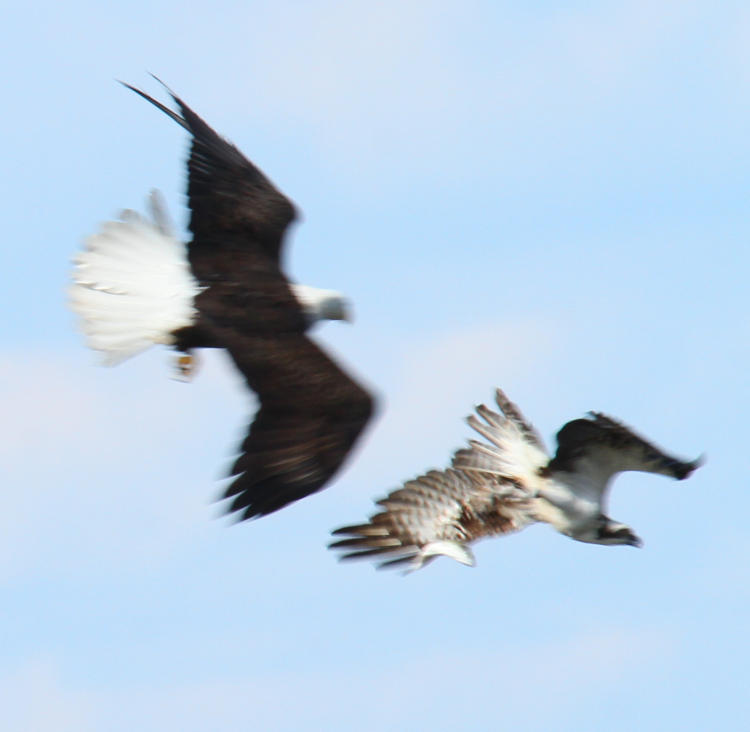
Even worse now, but you can see that the osprey has just released the fish. While I said above that osprey can out-maneuver eagles, this is presupposing that the osprey wasn’t burdened with a fish and the eagle had not just come out of a dive. Curiously, while I’m almost certain this is what the eagle was trying to accomplish, it failed to go after the fish as it fell, perhaps missing it until it was too late. I am quite sure there is no eagle nest within a kilometer or three of this location, so it wasn’t a defensive thing, nor a territorial thing since many different birds all hunt in this region, constantly. The eagle was probably just too close to see it fall, or to make the turn to snag it before it hit the water and sank.
Moments later, the same eagle circled around and provided a few nice, distinctive frames.

I’m not complaining about that one at all. There’s a reason we hit this branch of the lake in late afternoon, and this kind of lighting is it. Deepest blue skies opposite the sun, good lighting and shading on the face, little silhouetting – you can’t make the birds work for you, but you can pick the conditions that help a lot.
By the way, look carefully at the talons – in several frames it’s apparent that the eagle has a dropped, perhaps broken toe.

A little later on, I finally got the focus to remain tight as an osprey descended to snag a fish and… failed. It immediately circled around to try again, this time being successful, but I wasn’t. Dammitall anyway. One of these days…
Despite this activity, Mr Bugg felt we might be missing something more interesting on the other nearby branch of the lake, so we headed out to cross over, passing on our way close to directly under a small flock of black vultures (Coragyps atratus.)
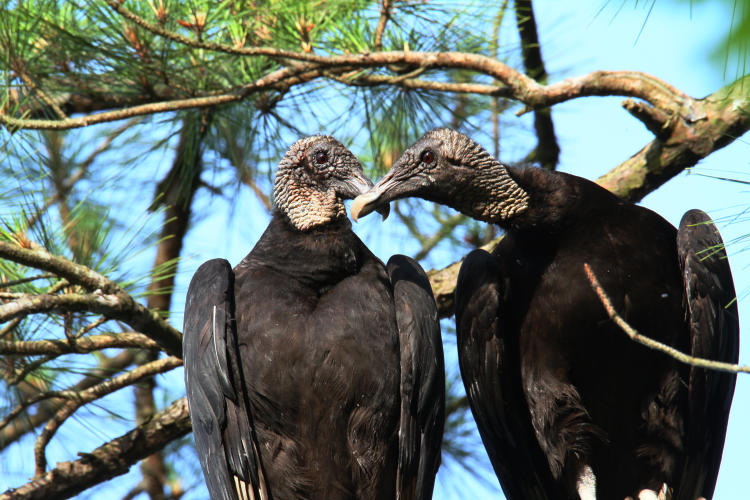
This pair watched my close pass with a little trepidation, but not so much that they saw fit to fly off, instead just clattering their beaks together in what was probably rude commentary on my hat or something. Note that this is full frame at 600mm, not even a dozen meters off.
On the other branch, a great blue heron (Ardea herodias herodias) was being an exhibitionist.

This was the view from some distance off at the boat ramps – it had finally finished preening with its head buried in its breast feathers, but then adopted this regal pose. I’m okay with it I guess, but I detest longneedle pines enough that I’m not wild about the background.
Returning 45 minutes later, the heron was still there as the sun dropped lower and got more golden in color, and it was patient enough to let us creep a bit closer and improve the background.

When using autofocus, this is the kind of image that you take a few frames of at least, defocusing and refocusing to try and snag that perfect distance. The autofocus will grab highest contrast and can easily be just a hair off the ideal point, not quite getting the eyes sharp (I have a few of those.) Even manual focus, with a DSLR at least, will probably not let you see enough resolution to ensure that perfect sharpness is achieved.
We were willing to wait for the sun to get even lower, hoping for deeper and more pink colors (the ‘golden hour,’ doncha know,) but the heron found it suspicious that we simply stopped where we were (probably about 20-30 meters off) and eventually flew off for less creepy surroundings.
Around the point where the light was far worse, we heard the calls of eagles quite close, and spotted this one perched in a tree overlooking our location.
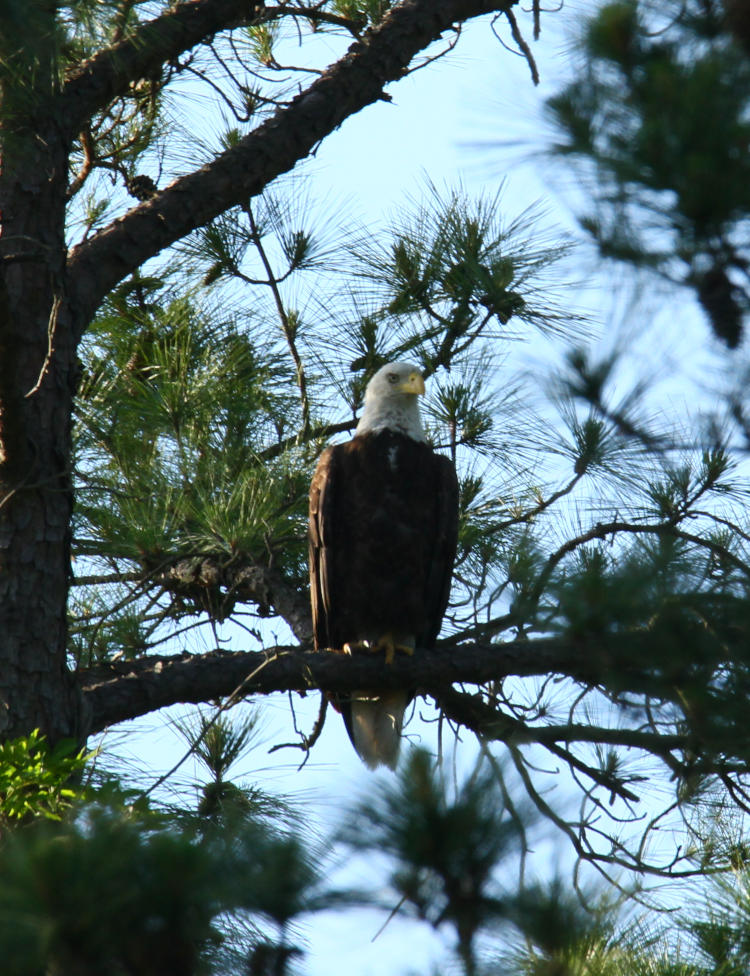
On a previous visit we’d heard the same thing at the same time of day, so I’m wondering if this is a dependable pattern, especially since the copse of trees isn’t far out of reach. One of the eagles, however, was remaining just barely out of sight like before, judging from the minimal distance of the calls. I doubt there’s a nest nearby, for two reasons, the first being that too much boater traffic comes right past this point constantly.
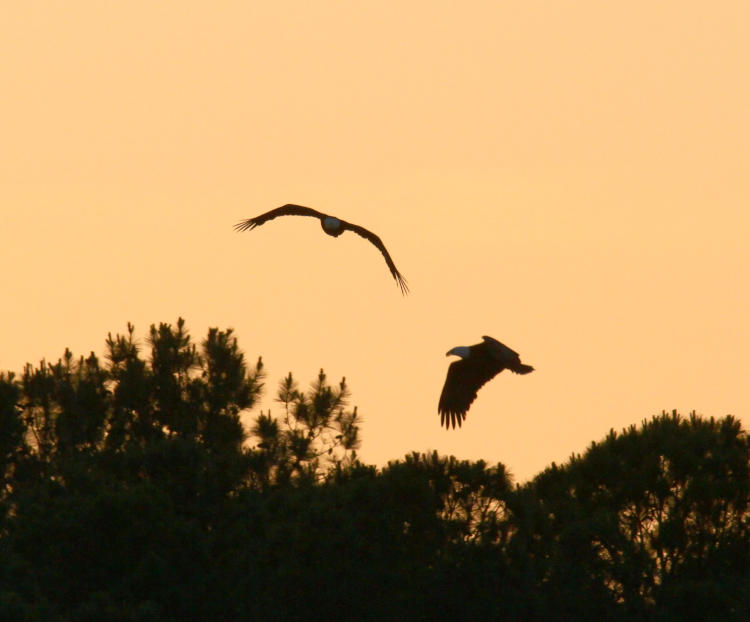
This was the second reason. I’d played a hunch and won out, since both eagles left the roost after sunset, just as they had on an earlier day when it was overcast. You’re seeing the extent of the sunset colors here, not a scrap of cloud in the sky despite the earlier conditions, and I’ve brightened this just enough to highlight the coloration and confirm that they’re eagles. Curiously, the pair split right here, one continuing on some ways down the lake while the other returned to almost the same spot, a bit further away and deeper in the trees.
And obviously, this was the last of the bird photos that we were going to get, but it was enough for one day, and I’ve still got a shitload of sorting to get through. So why am I here posting? Oh, yeah, that’s kind of the purpose of the sorting in the first place…
